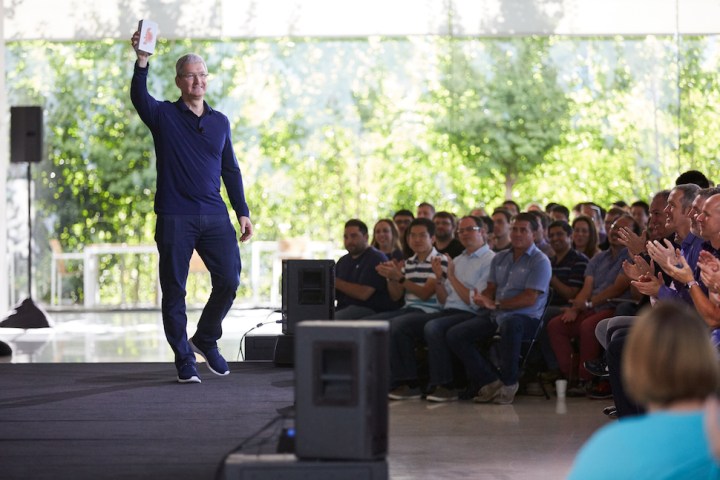
That’s exactly what happened Wednesday morning at Apple’s Cupertino, California campus. In an employee meeting, the company’s current CEO Tim Cook held up the milestone device for all to see, then lauded the company’s efforts, which have shaken up the smartphone industry and helped make smartphones mainstream.
“iPhone has become one of the most important, world-changing, and successful products in history,” Cook told attendees. “We never set out to make the most, but we’ve always set out to make the best products that make a difference. Thank you to everyone at Apple for helping change the world every day.”
Since its 2007 release, the iPhone has gone through 10 different iterations, with a total of 13 different models. Not every iPhone has been altogether different: Apple generally follows a biennial redesign strategy, and in the case of the 5C and the current iPhone SE, it brought back reworked older models in hopes of attracting more budget-conscious consumers.
That strategy has proved fruitful: While the 5C didn’t provide quite the success Apple had hoped for, a more feature-packed iPhone SE formed the backbone of yet another successful quarter for the company, with reports indicating as late as April that demand was still outpacing supply.
But no one can question Apple’s long-lived success with the iPhone line. Only Samsung’s Galaxy smartphone line has had similar staying power in a highly competitive smartphone market, and others have tried to copy Apple’s (and Samsung’s) success, but come up short.
Where does Apple go from here? The company’s trademark secrecy doesn’t give much to go on. What we do know is that the iPhone 7 is likely to launch in a little over a month, but it’s likely to be not much different than the current iPhone models. Wth reports indicating as many as 40 percent or more of iPhone owners would be eligible for an upgrade, it still could be a big release cycle for the Cupertino company.


